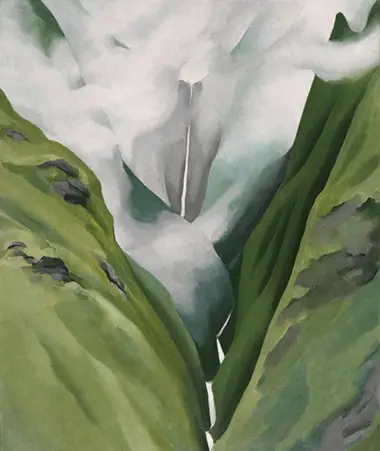Waterfall No. 3 Iao Valley is the last of three canvases depicting the waterfall that were painted by Georgia O'Keeffe during her 1939 trip to Hawai'i.
The image, like O'Keeffe's work in general, has most often been read as a sensory depiction of female sensuality, although O'Keeffe always denied this vehemently. This Freudian interpretation was first suggested by Alfred Steinglitz (who afterwards became O'Keeffe's husband) and was then picked up on by critics and later by the feminists of the 1970s.
In a way it is a distraction from the quality of O'Keeffe's work. Whilst there are sexual undertones in Waterfall No. 3 Iao Valley, the sensuality is partly a response to the lushness of the Hawai'ian landscape and does not alone define the appeal of the painting.
The simplicity of the detailing, the contrast between the dark stillness of the mountains and the pure brightness of the waterfall and the mists rising above it - to define the work simply by its sensuality is to narrow the parameters of its scope.
The Hawai'i trip marked a turning point for O'Keeffe; she used it to explore the islands and draw from the exotic tropical landscape. Her work saw regeneration as she moved from more abstract close-up images (particularly of New Mexico) to paintings that linked these abstracts to their wider landscapes.
Waterfall No. 3 Iao Valley reflects this movement very clearly, with clean lines and clear shapes that are both purposeful and intimate, yet simply express a bigger vision of the world.
Today the painting is owned by the Honolulu Museum of Art, O'ahu, Hawai'i.
